#Japanese Video Game Adaptation
Explore tagged Tumblr posts
Text
WB/Legendary/TOHO Detective Pikachu 2019 Movie Review Finale Part Four
ADMIT IT! Seeing Ryan Reynolds singing the Pokemon song as Pikacu was adorable! ADMIT IT! So that’s it. We got to the end of the movie. And yes. I did get a lot wrong, but I do love the twists and turns in the story and how things all fell into place in the end. Not sure about MewTwo’s new power he had just for the movie but… ok. Fair enough I suppose. So Tim returns to Rym City just as the…

View On WordPress
#2019#Anime#Anime Adaptation#Anime Adaptation Review#Detective Pikachu#DVD#DVD Review#Japanese Video Game#Japanese Video Game Adaptation#Legendary Pictures#Live Action Movie#Movie#Movie Review#Pokrmon#TOHO Pictures#Warner Brothers
0 notes
Text
Emil Sinclair & Max Demian
from Demian: The Story of a Boyhood by Hermann Hesse



submitted by anon
#researching pictures for this was interesting#the middle pic is from a video game where all the characters are inspired by classic lit so I'm willing to count that as an adaptation#it looks like there was a japanese adaptation of it in 1996 but there are literally no photos online. to the point of being on r/lostmedia#and there's a lot of talk about the BTS album Wings being inspired by this book? idk anything about bts but that's interesting#why is this german novel so big in south korea??#demian#hermann hesse#limbus company#I'm going to tag >#bts#< in case you guys are interested#classic literature#german literature#polls#queer#new post
20 notes
·
View notes
Text

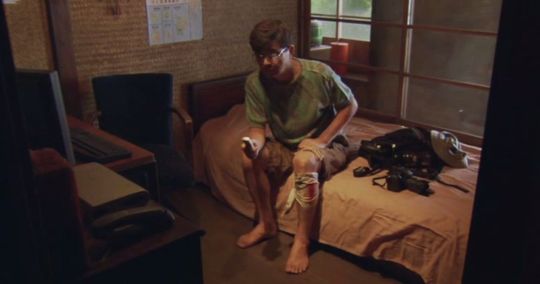


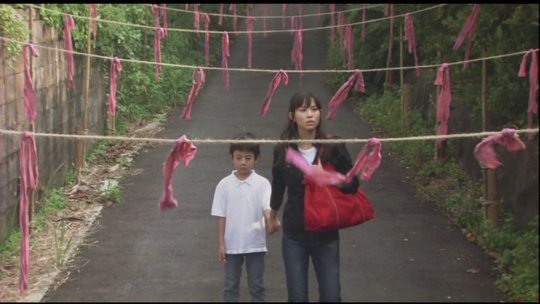

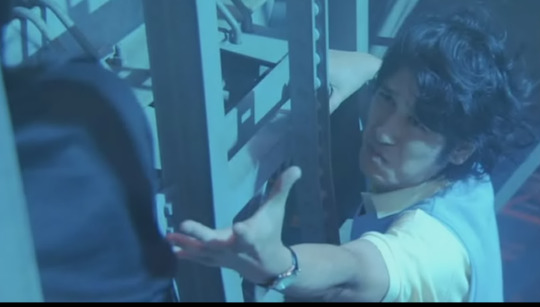
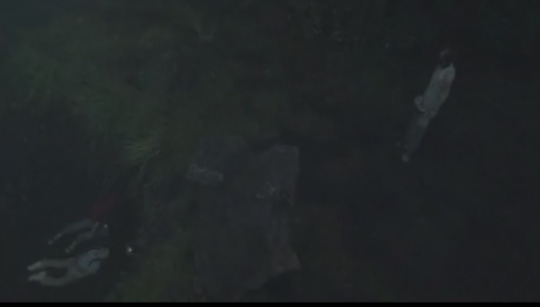
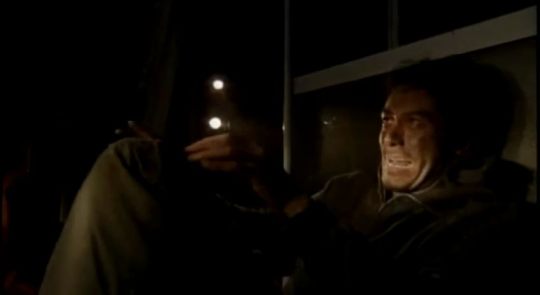
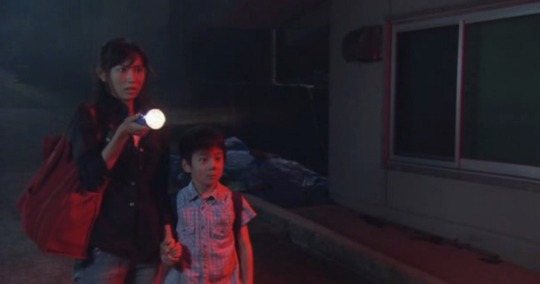
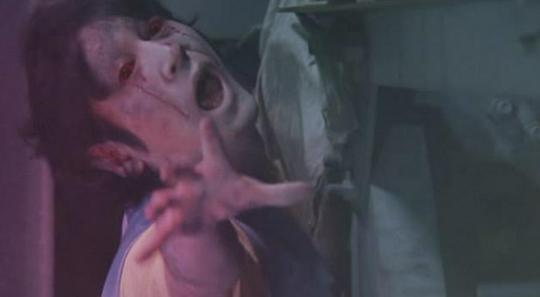
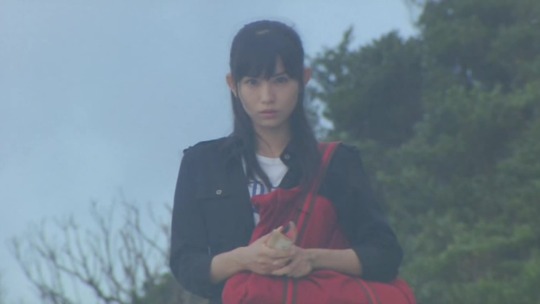
Forbidden Siren (サイレン) AKA Siren (2006), Dir. Yukihiko Tsutsumi.
#cult horror#horror#cult film#japanese#forbidden siren#asian horror#japanese horror#siren#サイレン#2006#japanese cinema#yukihiko tsutsumi#thriller#2000s movies#eerie#independent film#obscure horror#psychological horror#video game adaptation#surrealism#toho#occult horror#j horror#堤幸彦#psychological thriller#world cinema
68 notes
·
View notes
Text
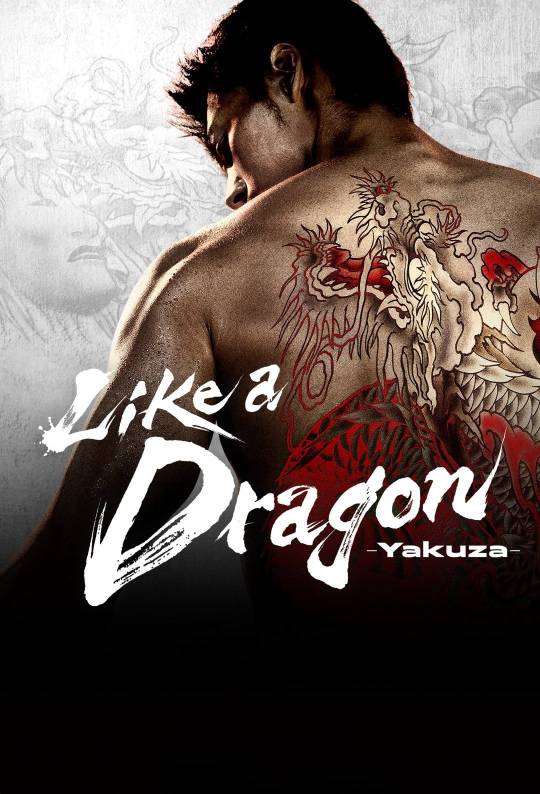
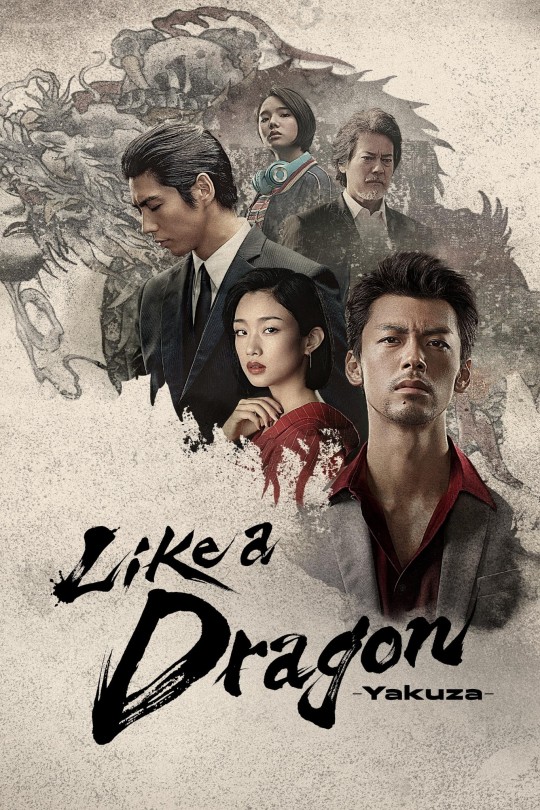
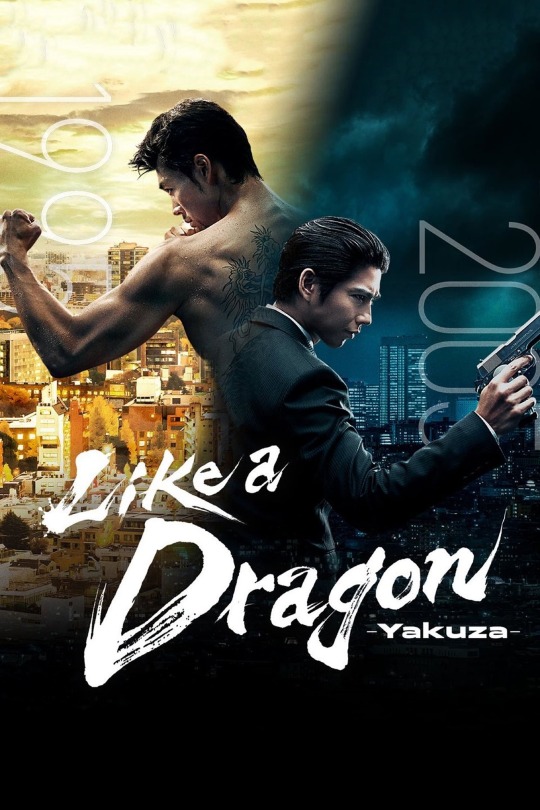
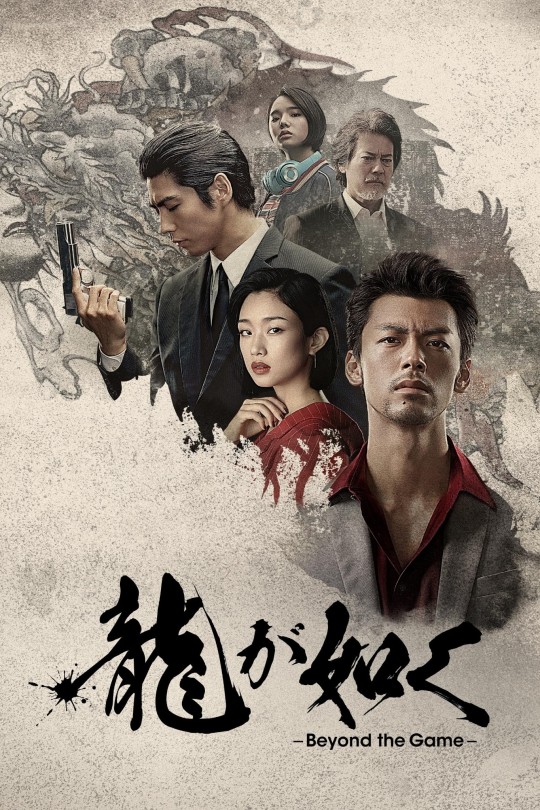
W A T C H I N G
#LIKE A DRAGON: YAKUZA (2024)#龍が如く#龍が如く~beyond the game~#Ryoma Takeuchi#Kento Kaku#Munetaka Aoki#Yuumi Kawai#Hinano Nakayama#Toshiaki Karasawa#Kōichi Satō#Subaru Shibutani#Saki Takaoka#Ryudo Uzaki#Masaya Kato#Orakio#Tomoya Maeno#Johnny Yong Bosch#Matthew Mercer#Kazuma Kiryu#Akira Nishikiyama#Goro Majima#YAKUZA#crime thriller#action#video game adaptation#Dojima family#amazon mgm studios#japanese tv show#WATCHING#Kamurocho
8 notes
·
View notes
Video
youtube
Elden Ring Manga
#youtube#Nikiichi Tobita art#manga art#japanese art#japanese comic's#japanese manga#video game adaptation#Elden ring#fromsoft#comedy manga
3 notes
·
View notes
Text
masterpost of horror lists
here are all my horror lists in one place to make it easier to find! enjoy!
sub-genres
action horror
analog horror
animal horror
animated horror
anthology horror
aquatic horror
apocalyptic horror
backwoods horror
bubblegum horror
campy horror
cannibal horror
children’s horror
comedy horror
coming-of-age horror
corporate/work place horror
cult horror
dance horror
dark comedy horror
daylight horror
death games
domestic horror
ecological horror
erotic horror
experimental horror
fairytale horror
fantasy horror
folk horror
found footage horror
giallo horror
gothic horror
grief horror
historical horror
holiday horror
home invasion horror
house horror
indie horror
isolation horror
insect horror
lgbtqia+ horror
lovecraftian/cosmic horror
medical horror
meta horror
monster horror
musical horror
mystery horror
mythological horror
neo-monster horror
new french extremity horror
paranormal horror
political horror
psychedelic horror
psychological horror
religious horror
revenge horror
romantic horror
dramatic horror
science fiction horror
slasher
southern gothic horror
sov horror (shot-on-video)
splatter/body horror
survival horror
techno-horror
vampire horror
virus horror
werewolf horror
western horror
witch horror
zombie horror
horror plots/settings
road trip horror
summer camp horror
cave horror
doll horror
cinema horror
cabin horror
clown horror
wilderness horror
asylum horror
small town horror
college horror
plot devices
storm horror
from a child’s perspective
final girl/guy (this is slasher horror trope)
last guy/girl (this is different than final girl/guy)
reality-bending horror
slow burn horror
possession
pregnancy horror
foreign horror or non-american horror
african horror
spanish horror
middle eastern horror
korean horror
japanese horror
british horror
german horror
indian horror
thai horror
irish horror
scottish horror
slavic horror (kinda combined a bunch of countries for this)
chinese horror
french horror
australian horror
canadian horror
decades
silent era
30s horror
40s horror
50s horror
60s horror
70s horror
80s horror
90s horror
2000s horror
2010s horror
2020s horror
companies/services
blumhouse horror
a24 horror
ghosthouse horror
shudder horror
other lists
horror literature to movies
techno-color horror movies
video game to horror movie adaption
video nasties
female directed horror
my 130 favorite horror movies
horror movies critics hated because they’re stupid
horror remakes/sequels that weren’t bad
female villains in horror
horror movies so bad they’re good
non-horror movies that feel like horror movies
directors + their favorite horror movies + directors in the notes
tumblr’s favorite horror movie (based off my poll)
horror movie plot twists
cult classic horror movies
essential underrated horror films
worst horror movie husbands
religious horror that isn’t christianity
black horror movies
extreme horror (maybe use this as an avoid list)
horror shorts
32K notes
·
View notes
Text
#anime#weeb#otaku#myanimelist#favorite#voice actors#art#animation#japan#japanese#video game#adaptations#manga
1 note
·
View note
Text
Dear Followers,
This is a PSA. Hikaru no Go (2020) is now available to stream on Prime Video. You should watch it.
But Caity, you may ask. Why should I watch this Chinese live action drama based on the popular turn-of-the-millenium Japanese manga and anime of the same name? The answer, my friends, is because it is fucking phenomenal.
Hikaru no Go is my favorite sports anime. It was one of the first manga I ever read. When I own a home someday and have bookshelves, it is one of the only manga series I wish to own in its entirety in print. The story is deeply compelling, moving, funny, relatable. It truly has something I haven't found in another animanga in twenty years.
And the Chinese live action adaptation takes that perfect, beautiful source material and creates something equally perfect and beautiful (if not more so? feels blasphemous to say, but boy howdy I'm not NOT saying it).
The way in which the original Japanese story—the characters, the culture, the game of go—is translated into Chinese is really masterfully executed. The story is incredibly faithful to the original, and when it does differ, it does so in really creative, thoughtful ways that really work.
The actors fucking nail it. Honestly all of them, but I'm looking at the kids in the first two episodes in particular. Blown away by the performances of a couple of ten-year-olds. Kids have a bright future ahead of them, damn.
This show has the budget. If y'all know me at all, you know I'll enjoy a low-budget wuxia flick because it's a good time, but damn, if I had standards, they would be met and exceeded by this show. The hair, the makeup, the costumes, the effects (there is an effect every time the "ghost" is on screen where he is partially translucent. It is perfectly executed and incredibly impressive, at least to my layman eyes). The very first opening credits scene is super beautiful, the end credits are beautiful, it's all just so pretty and polished and feels good on my eye holes.
Honestly, I cannot gush enough about this show. It ranks up with Nirvana in Fire in my heart (which I do not say lightly, considering I went through my entire list and lowered the ratings I'd given each show accordingly after I first watched nif so that the 10 weighed more heavily).
tl;dr: If you liked the hikago animanga, you should watch this show. If you never read/watched hikago, you should watch this show. If you did not like hikago, you should watch this show. Please watch this show, I am begging you.
Sincerely, A Rabid Hikago Fangirl
#hikaru no go#hikaru no go (2020)#棋魂#a psa#please#do yourself a favor#this show is so heckin good#I'm like five episodes into my rewatch and I can't stop screaming about it#something something chu ying learning to let go of his obsession#something something the heavens sent you to shi guang for a reason#like that stuff if absolutely present in the original as well#and the original has obvious merit#love me that heckin manga#but like#if you love the anime/manga and are worried about being disappointed#do not be#it's so heckin good#just go#see for yourself
180 notes
·
View notes
Text
I think there is a difference between the comic as a sequence of images with text and the comic as a comic. it's a subtle difference that an untrained eye might not see but the more one as artist draws comics the clearer this difference becomes, because one who first aspires to draw comics will soon find they are merely drawing sequences of images with text.
when people say an artist is clearly inspired by anime they often use "anime" to refer to japanese pop culture in general, but if you look more closely you can often tell it really is specifically anime rather than manga that inspired them, because the paneling and camera angles in their comics will read like a series of anime screenshots rather than a manga page. similarly, when I was a teenager really popular manga that had anime adaptions would sometimes get "animanga" reprints where they replaced the panels with the equivalent anime screenshots of the scene, and they often looked like dogshit because the very premise showed blatant disregard for why the original comic worked in the first place. these two examples are both about anime because i am a weeb but it applies outside that context too. a cartoon storyboard can be read as if it were a comic, but what it really is is a sequence of images with text that has yet to be refined into its actual intended format.
there are many artists who only employ the medium of comic because what they actually want to draw is a video, or a video game cutscene, but the only tool actually at their disposal is the ability to draw a series of images and add text to them so that is what they use. there is no shame or mistake in doing this, you have to make your art with the tools that you have available, and if the sequence of images with text is enough to convey the idea then it was the right tool for the job. but these are different mediums with different visual languages, languages which have a lot of overlap and can occasionally be used in each other's stead to achieve similar results (especially when drawing a fanart comic of a video game for example), but which are still ultimately different. the comic and the video and the cutscene are all different forms that a sequence of images with text can take but they are far from completely interchangeable.
there is a key difference in approach to the comic as a series of images roughly interchangeable with other forms of series of images like the video and the cutscene, and the comic as specifically the comic. this difference in approach is not always necessary to achieve results, an artist who wants to convey a scenario they came up with needs only the sequence of images with text to achieve this. but the difference between a comic with good writing and art, and a comic that is a good comic, is in whether it was treated as a comic rather than a sequence of images with text. I say this as an artist whose nearly every comic has been simply a sequence of images, because I just don't have the patience to refine it into a comic when I merely want to convey my idea rather than draw a comic. it takes a particular skill and insight that have to be developed and practised separately from the ability to draw well and the ability to write well in order to become good at making "the comic" as synthesis of the two.
it's hard to specifically point out the essence of this difference between the sequence of images and the comic because it's kind of a vibes thing honestly, and it depends on where and how the comic was meant to be published too. comics meant to have paper print editions have different constraints and requirements and frameworks to work with than webtoons meant to be read on slim mobile screens in a continuous scrolling format. a good traditional comic will consider not just how each individual panel looks but also the way each page as a whole looks, and how the pages look next to each other in a spread, and how it feels to turn the page towards the next spread. a good webtoon will consider the movement of scrolling down and how this affects the transition from one moment to another in its composition. time is time in videos and cutscenes but space is time in comics, and the space your have available determines how you can divide time across it. when you make a webcomic on your own website you have no constraints but the ones you set for yourself, and sometimes this leads to things like homestuck, which would not work in any other format than the one it created for itself.
the best comics are good because they tell their story and present their images specifically in the form of a comic, in a way that would not be possible if it were not specifically a comic. I think this is true for basically every medium, I'm just thinking about comics specifically lately, because even though I don't really consider myself a comic artist - because I usually draw sequences of images rather than comics - the thing my clients want to pay for is often still "a comic", and they don't know or care to tell the difference. it's a difference that, as established, is often fairly moot anyway, because as long as it successfully conveys your idea it's good enough. but it's precisely because the sequence of images is often good enough that the specific skill of the comic artist is often overlooked.
539 notes
·
View notes
Text
The whole story of the illegal sale of Candy Candy products by Yumiko Igarashi

What is Candy Candy?
Candy Candy is shojo manga that was published between 1975 and 1981 in Nakayoshi magazine. It was written by Kyoko Mizuki (Keiko Nagita) and illustrated by Yumiko Igarashi. It was adapted to anime between 1976 and 1979 with a total of 115 episodes by Toei Animation.
The dramatic story of the sweet and optimistic Candy was an international success and is today an icon of shojo manga and one of the best sellers.
Evidently, the copyright holders are both Mizuki and Igarashi, and the trademark rights holder is Toei Animation.
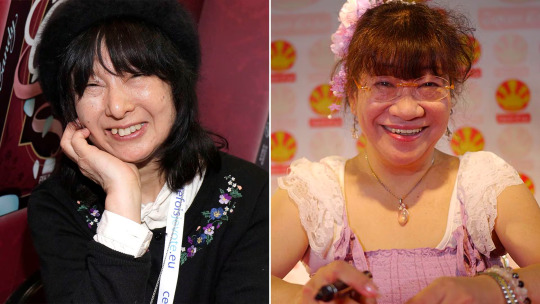
Beginning of the conflict: Cancellation of the contract with Kodansha
According to Igarashi, her subsequent works at Kodansha didn't achieve significant sales, so the publisher abandoned her.
Candy Candy's views were decreasing over time and Kodansha did nothing. So Igarashi asked Mizuki to cancel her contract with Kodansha, Mizuki chose her friend and they did so on February 26, 1995.
Toei Animation also had a contract with Kodansha for Candy Candy, which automatically expired when Mizuki and Igarashi canceled their contract. To broadcast Candy Candy, Toei Animation had to sign a new contract with Igarashi and Mizuki. Toei Animation and Mizuki tried to contact Igarashi many times for this but were unsuccessful.
Meanwhile, Igarashi was working with Fuji Sankei (now Qualus), through which she was able to offer licenses to many companies to sell Candy Candy products without asking permission from Mizuki or Toei.
The unmasking: Banpresto's purikura
One of these companies was Banpresto Co., Ltd., which develops video games and makes collectible figures. Igarashi lied about creating a new (fictitious) company in Hong Kong with Mizuki and Toei called "Candy Corporation." Igarashi and Banpresto made a "purikura" (Japanese photo booths) contract. Banpresto asked Igarashi many times if Mizuki was aware of this contract, Igarashi always confirmed it. Banpresto considered it rude to ask Mizuki herself to confirm, so they agreed.
So how did they find out what Igarashi was doing? Candy Candy's purikura was set up at the Tokyo Gulliver Store in Matsudo, Chiba Prefecture, which was a large gaming center managed by Banpresto.
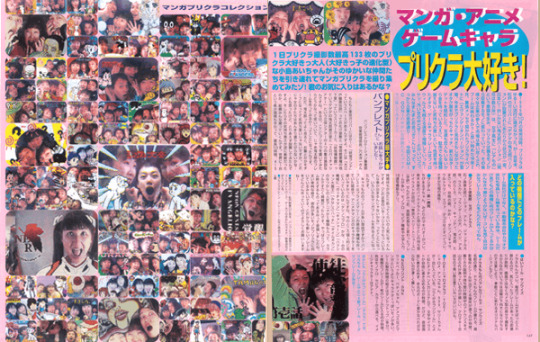
Banpresto intended to install its purikura machines throughout the country, including Candy Candy.
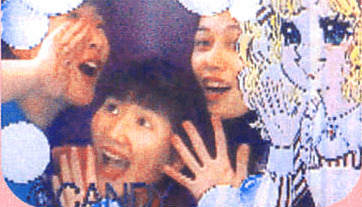
Igarashi stated that she accepted the purikura because it was only "a test case" and that she would have no compensation. She said that she was worried that Mizuki would reject the offer because Mizuki didn't like games at all (which Mizuki never said), so she planned to talk to Mizuki later if the test was successful. News of Candy Candy's purikura spread through the media and reached Mizuki in May 1997. Igarashi says that Mizuki told her over the phone that if she had known she wouldn't have refused, and that Igarashi was trying to keep the profits for herself. She said that Mizuki forced her to cancel the purikura event and that she hired a lawyer to sue Igarashi. Mizuki refuted this on her official website. Igarashi stated that she didn't receive any benefit from the purikura because it was only a prototype. Even if it were, purikura isn't free, so benefits were generated.
The problem is that the idea of creating a purikura was Igarashi's, not Banpresto's. Banpresto, upon realizing that they hadn't received permission from Mizuki, removed the purikura and wouldn't move it until the copyright issue was resolved. That's why Mizuki didn't sue Banpresto. Still, Banpresto apologized profusely for being involved in the scam.
Mizuki comments that she wasn't sure about canceling the contract with Kodansha, her husband didn't recommend it, but she still did it and regrets it. Her husband asked the legal advisor who had drawn up the contract, the legal advisor didn't know. Worried, Mizuki and her husband wanted to talk to Igarashi to discuss what they would do with Candy Candy from then on, but Igarashi kept putting off her request, saying that she was busy and for her to wait until the next month, and so on.
Mizuki became suspicious and finally they found out about the purikura issue, they even went to Banpresto to ask for explanations, to which Banpresto responded that they received the copyright to do it from the (fictitious) company that Igarashi created without Mizuki or Toei. They also told her how Igarashi confirmed to them several times that she had Mizuki's permission. Although purikura was considered a test, they received benefits for it.
As a result of this, everything that Igarashi had been doing in Hong Kong was discovered: she published manga products without authorization through Jade Dynasty Publishing. When this publisher found out that they didn't have Mizuki's permission either, they canceled the contract with Candy Corporation.
So far it was discovered what Igarashi had been doing without Mizuki's permission:
Original reproductions by Fuji Sankei and others.
Candy Candy reprint by Fusosha Publishing.
Fuji Sankei CD-ROM.
Postcards and cards manufactured by Jade Dynasty Publishing.
The Banpresto purikura.
Legal CD-ROM Manga.
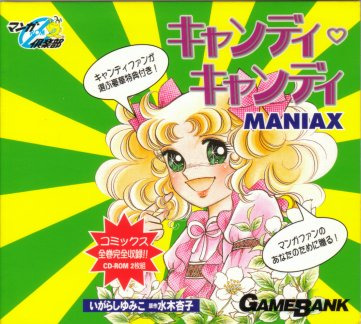
Illegal CD-ROM Manga.
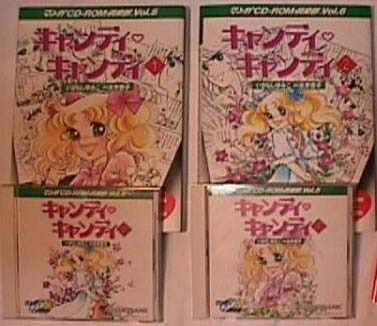
To all this, Igarashi insisted that 80% of Candy Candy belongs to her, and that only 20% belongs to Mizuki.
The case of fake original illustrations
In August 1997, the sale of original illustrations (again, without Mizuki's permission) was announced in the Sankei Shimbun. Finally, in September 1997, Fuji Sankei was sued for its lack of sincerity. These illustrations were actually prints made by a printer, they went on sale in February 1998 as a high quality print, but people in the art world warned that it wasn't a high quality print. That is, they were selling reprints at a high price as if they were high quality but they weren't.
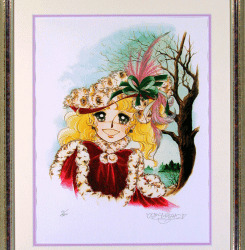
An expert commented that these fakes have a real value of 30 to 200 yen ($0.19-1.27). If they were originals, it would be between 8,000 and 20,000 yen ($50.73-126.84) (and framed); but Igarashi and Fuji Sankei sold them for between 40,000 and 140,000 yen ($253.67-887.85). The deceived fans were deeply hurt, if they had known that they were buying it without Mizuki's permission and at a higher price than the real one, they wouldn't have bought it.

Mail order advertisements in newspapers ceased, but they were still distributed and sold in art galleries, for example Atelier Beauty and Prince Gallery.
The problem of selling products without the Mizuki's name
A friend of Igarashi spread the false rumor that Mizuki sued Igarashi without talking to her first. In fact, the decision to report a friend of 20 years wasn't easy for Mizuki, but she had to do it AFTER talking to her. But she and Fuji Sankei refused to have a conversation with her about what happened. Several people told Mizuki to be careful with Igarashi, but Mizuki always defended her.
In the indication © on products, the names of all copyright holders must be added and never omitted without their consent. In the following images you can see which are the official products and which are the Igarashi products.
In this bag we see that the three names are included, it is original.
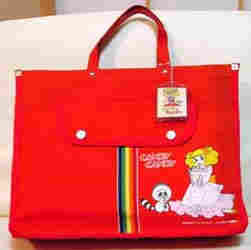

This backpack is also an official product, it contains the names of Mizuki and Igarashi.
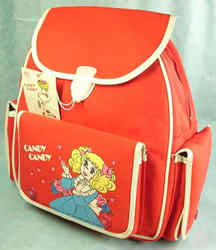
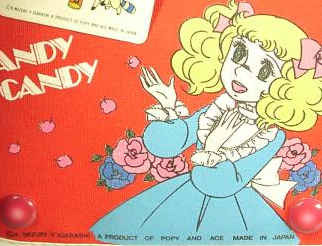
Let's now look at the illegal merchandise. In this product we can see only the Igarashi's name.
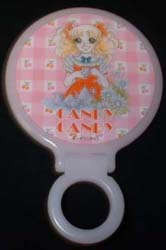
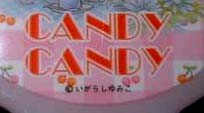
This other one used Mizuki's name without her permission.


The impossible broadcast of Candy Candy
In 2001 all broadcasting rights granted to foreign companies expired. So the later copies are pirated copies disguised as official products. This was done, for example, by Power International Multimedia Inc., Igarashi's business partner in Taiwan. Even after Igarashi lost her lawsuit in 2008, Power International released this DVD box set unlicensed from Toei Animation.
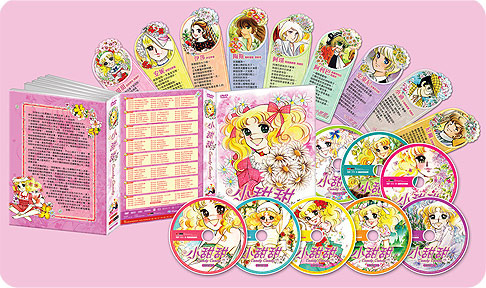
When it was discovered what Igarashi had been doing, Toei and Mizuko planned to resolve the situation by ratifying the illegal goods (confirming the counterfeit products and rebirthing them as an official product) if the Igarashi side appealed and didn't fight further after the court's ruling, with the intention to help scammed companies. But the matter reached the Supreme Court. The products spread so much around the world that nothing could be done about it.
On August 23, 1999, Mizuki and Toei signed an agreement stating that Toei Animation could register "Candy Candy" as a trademark so that it can broadcast the anime.
Currently, Toei Animation is wary of digitally remastering all 115 episodes (which would cost a considerable amount of money) only to have it eventually canceled due to the ongoing copyright dispute.
Mizuki allowed the anime to be broadcast. But there are many factors why it cannot be broadcast, even abroad:
The contract with Toei Animation hasn't been renewed.
The copyright dispute.
The problem of infringement of trademark rights by Igarashi.
Igarashi sent Toei Animation to court to invalidate its trademark on July 10, 2001, but this was dismissed.
Igarashi filed a lawsuit against Mizuki requesting consent to remake it.
In short, if both creators don't recognize the copyright and give their consent, the anime cannot be broadcast. But Igarashi didn't want to, she even wanted the trademark rights for herself, but Mizuki didn't allow it. Anyway, it's not fair because the anime version is also the work of Toei staff and voice actors. Igarashi gave Toei permission to rebroadcast it, but without acknowledging Mizuki's copyright, it became a vicious cycle.
Japan Manga Society against Kyoko Mizuki
Igarashi has publicly stated on many sites that Kyoko Mizuki isn't the original author. This is quite questionable because the story was written by Mizuki, Igarashi drew it. The Japan Manga Society doesn't offer Mizuki's presence and instead allows Igarashi to present convenient arguments and dismiss the Supreme Court's ruling. The Copyright Subcommittee of the Japan Manga Society declared that Mizuki's blocking the sale of products produced by Igarashi without permission from Mizuki and Toei was an abuse of rights without justifiable reason, even suggesting that Igarashi file a lawsuit against Mizuki.

During and after losing the case, Igarashi continued her illegal business saying that she had reached a deal with Mizuki (a lie).
Yumiko Igarashi on trial
Kodansha itself attempted to persuade Igarashi to apologize and reconcile with Mizuki by submitting a total of 3 statements to the district court in 1998 by Mitsuro Shimizu, the editor in charge of Candy Candy at Kodansha. Still, Japan Manga Society said Kodansha didn't testify. Mitsuro Shimizu explained that the editorial department selected Mizuki as the original author, the concept of Candy was discussed between Igarashi, Mizuki and Shimizu. Igarashi expressed her wishes and opinions but in the end it was Mizuki who made the final decision as the writer. Kunio Hase, the director of the Japan Manga Society said that these statements were false. Yukio Shindo, director of copyright business promotion at Kodansha, stated in court in October 1998 that manga works written from the original work are always subject to the original copyright of the original author, which to use a work for secondary use, permission must be obtained from the original author and the manga artist whatever it may be (even if they're illustrations) and that Kodansha always considered Kyoko Mizuko as the original author during the 20-year contract. The Japan Manga Society said that the Supreme Court's decision to position Mizuki as the original author is an absurd ruling that doesn't reflect the real situation of the manga industry. Kodansha has always maintained with legal opinions that Kyoko Mizuki is the original author and the manga work is a derivative, the work of the original manuscript. Yumiko Igarashi commented that the Supreme Court ruling naming Mizuko as the original author was unfair and doesn't accept that the person who wrote "just the words" has the copyright. In this situation, neither Kodansha can reprint the manga, nor can Toei broadcast the anime.
List of court cases related to “Candy Candy”
February 25, 1999: "Candy Candy" Case (Fuji Sankei)
Mizuki denounces the sale without her permission of false "high quality" illustrations by Igarashi and Fuji Kasei. The court recognized Mizuki as the owner of the copyright and ordered Igarashi to stop publication. Characters can't be used without Mizuki's permission. In November 1995 they signed a contract that established that their consent was required for the use of the characters, but Igarashi breached it.
April 8, 1999: "Candy Candy" Incident (Yumiko Igarashi Museum)
Mizuki denounces that products with Candy Candy's image continue to be sold without her permission, even after winning the first trial. The Yumiko Igarashi Museum had been conducting mail-order sales of Candy Candy products on the official Yumiko Igarashi website.
March 17, 2000: Candy Candy Illustration Sales Case (Shizuka Art)
Mizuki sues Shizuka Art for selling Candy Candy's image without her permission. An interim injunction was granted against Shizuka Art to prohibit sales. Shizuka Art was exhibiting and selling new paintings by Yumiko Igarashi as original paintings.
March 30, 2000: "Candy Candy" Case (Fuji Sankei)
The judge noted that in manga, the illustrations and the development of the story are inseparable and integral. You can't sell the illustrations.
May 25, 2000: "Candy Candy" Case (Kabaya Foods)
Between 1998 and 1999, Kabaya Foods, with only Igarashi's consent, manufactured and sold candy bags featuring the Candy Candy characters. The judge stated that the original author can exercise copyright even if only images are used. The Tokyo District Court ordered the defendant to pay approximately 3 million yen ($19,029.75).
October 17, 2000: Candy Candy Paintings Sales Case (Shizuka Art)
The "Hello Candy Candy" exhibition displayed and sold paintings of Candy Candy, again without Mizuki's consent.
December 26, 2000: Candy Candy Commercialization Case
Mizuki demands Fuji Sankei and Yumiko Igarashi.
March 2001: Japanese anime remake test
Igarashi filed a lawsuit against Mizuki demanding a remake of Candy Candy with Nippon Animation.
August 7-September 28, 2001: Toei trademark invalidation trial
Igarashi filed a trademark invalidation suit against Toei Animation on July 10 but it was dismissed because in 1999 Mizuki and Toei signed an agreement establishing that Toei Animation would register Candy Candy as a trademark.
October 25, 2001: "Candy Candy" Case (Fuji Sankei)
For the third time, the judge explains to her that copyright can't be enforced without the consent of the original author and the manga artist. They granted the copyright to the original author, Mizuki.
February 23, 2002: "Candy Candy" Incident (Lucky Corporation, Osaka)
Lucky Corporation sues Igarashi because it suffered damages of approximately 45 million yen ($285,446.25) from the manufacture and sale of "Candy Candy" products, a right granted by Igarashi but not by Mizuki. Igarashi paid about 10 million yen ($63,432.50) and a settlement fee.
April 2002: Otaru Art Museum Exhibition Test
Yumiko sued Mizuki over the exhibition at the Otaru Art Museum.
May 30, 2002: Candy Candy Clothing Sale (Tanii, Dan Enterprises, Sunbright, Earth Project)
Mizuki sues several clothing sales companies for commercializing Candy Candy characters without permission. The damage claim was for 55 million yen ($348,878.75), but the Tokyo District Court ordered her to pay approximately 29 million yen ($183,954.25).
September 10, 2003: "Candy Candy" merchandise breach of contract case
Toymaker Apple One made Candy Candy puzzles, again, only with Igarashi's permission, not Mizuki's. So they sued Igarashi and other companies that claimed to own the copyrights they granted them to make the puzzles.
July 21, 2004: "Candy Candy" merchandise breach of contract case
The Tokyo District Court of First Instance sentenced Igarashi to pay approximately 1.75 million yen ($11,100.69).
September 2005: Kurashiki Art Museum Exhibition Test
Mizuki against the Kurashiki Art Museum, which held an exhibition of Candy Candy with only the permission of Igarashi, who said "I don't need permission to show it."
甜甜 Lady Lady: The Taiwanese Candy
You may have ever used an image mistakenly thinking it was Candy. That's because Igarashi created a "new original work" called "Lady Lady" in Taiwan that curiously resembles "Candy Candy" (the difference is in the bangs and that she doesn't have freckles). The other two characters also look like Anthony and Terry.

In this way, Igarashi challenges Toei Animation by infringing (again) Toei's trademark rights. As if that were not enough, "Lady Lady" is the title of the animated version of "Lady!!" by Yoko Hide and trademark of Toei Animation. Also, Candy Candy's title in Chinese is "小甜甜" (Xiǎo tián tián), literally "Little Candy Candy". I mean, it's a shameless mix between Candy Candy and Lady Lady. 甜甜 is the Chinese name of Yumiko Igarashi's Lady Lady.

Current situation
Since as of today they have not reached an agreement, the anime cannot be broadcast nor the manga can be published either in Japan or abroad. The authors continued with their professional careers. Igarashi can't create or sell any products related to Candy Candy, something Mizuki can do, without using Igarashi's illustrations.
To date, Igarashi has't expressed any apology to Mizuki or Toei Animation. In fact, she is suspected of still producing illegal goods on the foreign market. Mizuki feels sad, not only because of everything that happened, but also because of the malicious mentality that Igarashi had about her, thinking that she was her friend.
Please, be careful with the products you buy of Candy Candy, try to make sure they're original and not illegal products. Do not contribute to Igarashi's illegal business.
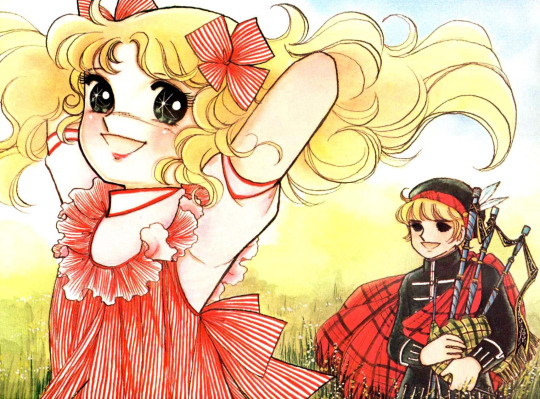
Sources:
#candy candy#yumiko igarashi#toei animation#anime#manga#shojo#shoujo#shoujo anime#shoujo manga#shojo anime#shojo manga#old shojo#old shoujo#kyoko mizuki
227 notes
·
View notes
Text
'Puella Magi Madoka Magica -Walpurgisnacht: Rising-' Announces Winter 2024 Debut
On Sunday, at Aniplex Online Fest 2023, Aniplex revealed a new teaser trailer for Puella Magi Madoka Magica The Movie: -Walpurgisnacht Rising- (Mahou Shoujo Madoka★Magica: Walpurgis no Kaiten).
The trailer revealed that the anime film, which continues the Puella Magi Madoka Magica main timeline after the events of the 2013 film Rebellion, will debut theatrically in Japan in Winter 2024.
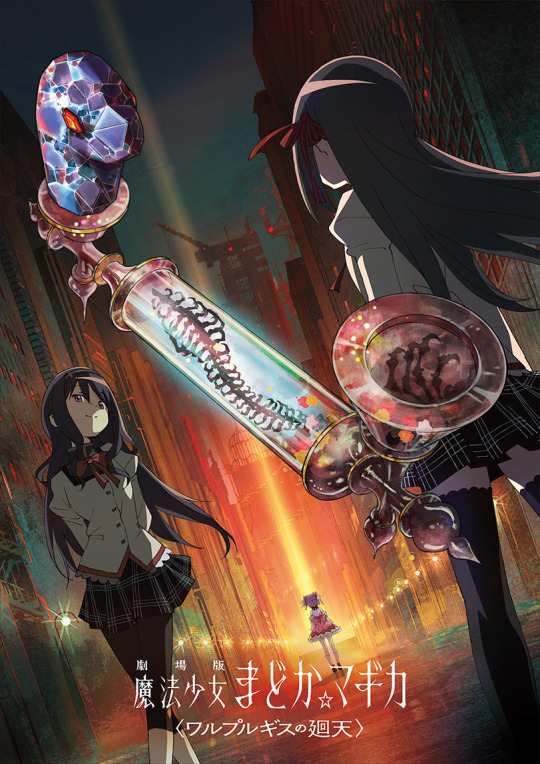
Aniplex also revealed a new key visual for the film and announced that director Yukihiro Miyamoto, who directed the original 2011 television anime series, its two film adaptation, Rebellion, and spin-off Magia Record is returning for Walpurgisnacht: Rising at SHAFT.
He is joined by the previously revealed staff, including the original creators Magica Quartet, chief director Akiyuki Simbou, writer Gen Urobuchi (Nitroplus), and character designer Aokiume. Additional returning staff includes character animation designer Junichiro Taniguchi, who served as Chief Animation Director on previous projects, parallel world designer Gekidan InuCurry (Doroinu), who created the iconic, unique looks of the Witches Labyrinths, and composer Yuki Kajiura.
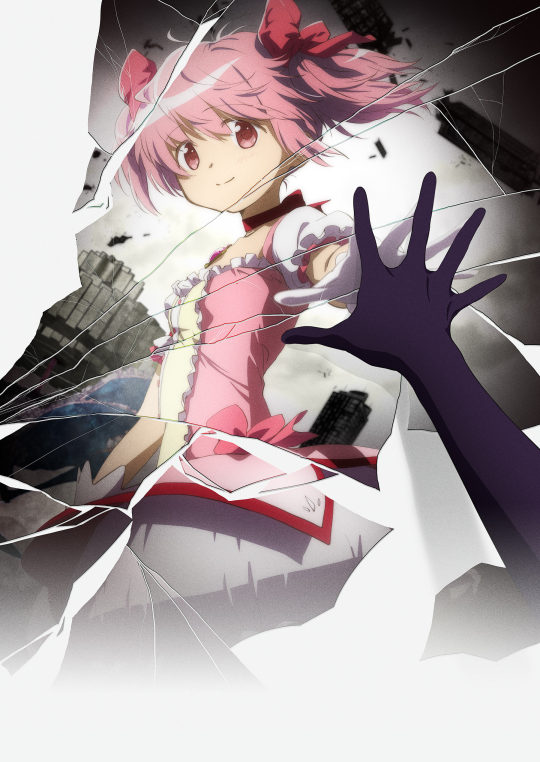
All of the original Japanese main voice cast from the series and Rebellion are set to reprise their roles:
Aoi Yuki as Madoka Kaname
Chiwa Saito as Homura Akemi
Kaori Mizuhashi as Mami Tomoe
Eri Kitamura as Sayaka Miki
Ai Nonaka as Kyouko Sakura
Kana Asumi as Nagisa Momoe
Emiri Kato as Kyubey
The anime was originally announced back in 2021, but in 2019 at Anime Expo, Homura's voice actress, Chiwa Saito, foreshadowed the sequel, saying that "the actual series has not ended yet" and that she was looking forward to everyone seeing Devil Homura, a reference to the ending of Rebellion, again.
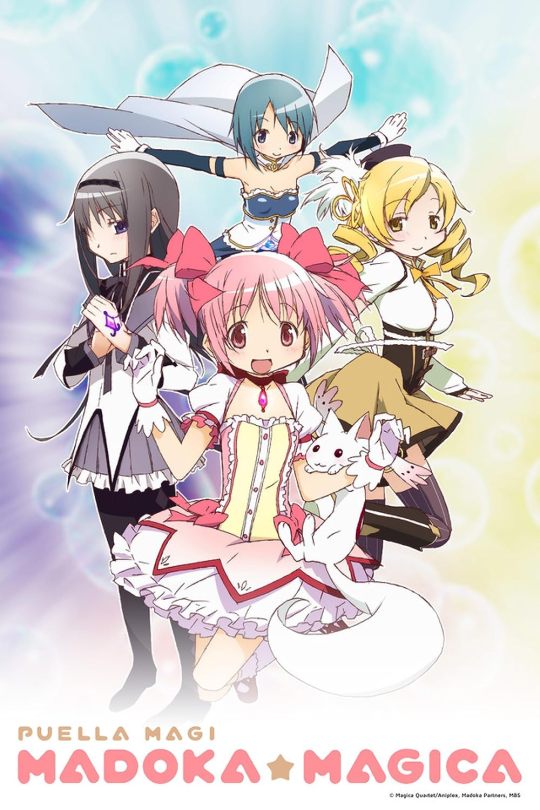
Puella Magi Madoka Magica aired in 2011 to critical and audience acclaim. It became a cultural phenomenon and spawned two movie adaptations, Beginnings and Eternal, the sequel film Rebellion, and multiple manga and video game spin-offs. It is credited with popularizing mixing dark, postmodern tropes with the magical girl genre.
Source: Aniplex Online Fest 2023, Press Release
#madoka magica#puella magi madoka magica#yuri#anime#news#girls love#lgbt#gay#lgbtq#gl#queer#lesbian#manga#yuri anime#mahou shoujo madoka magica
818 notes
·
View notes
Text
WB/Legendary/TOHO Detective Pikachu 2018 Movie Review Part 3
Things Are Revealed, And Twists Pop Up… And I Like It! Let’s face it. This movie is just too much fun. For all the Pokemon you see IRL, for the story, for Ryan Reynolds and JUSTICE… sigh… it’s a good movie. So yeah. I am now even more distappointed that they didn’t pull the trigger on a sequel pre Zaslab, and might never do it now that Zaslab is the One Who Rules Them All… or something. Sigh.…

View On WordPress
#2018#Anime#Anime Adaptation#Anime Adaptation Movie#Detective Pikachu#DVD#DVD Review#Japanese Video Game#Japanese Video Game Adaptation#Legendary Pictures#Movie#Movie Review#Pokemon#TOHO Pictures#Warner Brothers
0 notes
Text
unbelievably specific modern things the crows would love. too bad they live in a late-1800s fantasy world
Kaz: screenshotting nfts, those web weaving posts about dog metaphors, leaving people on read, stealing from the self checkout in supermarkets, emo phases, wearing headphones but not actually listening to anything so they're just there just as a conversation deterrent, winding up scam callers, escape rooms, pretending to know nothing about pop culture in order to annoy people, playing solitaire online, Knowing A Guy for everything
Inej: social media sleuthing, posting goodreads quotes, strictly come dancing, snoopy, easily accessible climbing shoes, mr darcy, shouting at the screen when someone's judged incorrectly on a competition show, getting unbelievably competitive about wii sports/duolingo scoreboards/goodreads goals/animal crossing islands/air hockey, texting..... With loads of elipses... Like your parents.... and dropping unprompted wisdom in them.....
Jesper: neon clothes, the 💯 emoji, making everyone as miis on tomodachi life but being so bad at it that kaz and nina's miis end up getting married, lisa frank art, scamming people on depop, cheap jewellery that makes you go green, complaining about how cottagecore videos don't correctly represent the Rural Farm Life, shitty 2000s club bangers, the kitsch movement, giving your car a name, hoiking your novelty socks really high so everyone can see them, shitty christmas films, first person shooters
Wylan: speedpaint videos, joe hisaishi, being judgemental about other people's spotify wrappeds, djungelskog, that gif of the japanese mascot costume running through a bunch of explosions, watching weird low-budget adaptations of shakespeare plays with kaz, those arcade crane games, piercing your own ears with a needle and a lighter then being somehow surprised when it gets infected
Matthias: making an instagram account in-character for your dog, posting low-quality graphics of inspirational or biblical quotes on facebook (yk the ones w the landscape or sunset behind them), taking frowning selfies from below like your granddad does, viking media of any sort, buying dozens of identical t-shirts from big tesco, mixing up celebrities all the time, perpetually caving and giving the scouts/guides/youth groups/football clubs/carollers/etc money for their fundraisers
Nina: making bait posts online in the style of 'why can't we just print more money', period dramas, wearing huge mother of the bride style hats to weddings, saving recipes/crafts/art ideas on tiktok and then never actually doing them, pink gin, tiktok edits of fit celebs/characters, 3 hour video essays abt pop culture, saying 'break up with him' in response to every relationship woe, buying cheerful tat from flying tiger
#the reason I say mr darcy is bc he's a big bitch who does grand gestures at the eleventh hour and Works To Deserve Her. familiar no?#six of crows#crooked kingdom#soc#grishaverse#my post#long post
379 notes
·
View notes
Text
Japanese website Forest Page is shutting down ~today, a tragic loss of "Heisei otaku memories", as so many are calling it. Launched in 2003, Forest Page was a "Geocities for mobile", a site that hosted user-created websites and gave them tools to allow non-coders to make them. In practice, it became one of the premiere places for fanfiction in Japan, with the stories hosted on author-created sites.
It wasn't quite the Fanfic.net of Japan, as for one the Japanese fandom just never centralized quite the way the 2000's western one did, instead being spread out over a half dozen or so sites. But additionally, it wasn't initially popular for fanfic so much as cell phone fanfiction, because in 2000's Japan the "cell phone novel" was a specific thing. These websites were being made for flip phones, not smartphones, and not only would people read them on those phones, they would often write them. None of that was very conducive to the creation and consumption of a "traditional" novel; so starting in the 2000's Japanese writers started making stories fit for the medium, namely:
Very short
A huge focus on dialogue and inner thoughts, with no/minimal description or scene detail
Using a limited POV of a specific character
Often employing the medium-as-message, like using emojis, structuring the story as IM's or emails, etc.
Also they all had huge gaps between lines, I'm not really sure what that is about:

Probably for readability on the phone given the small screen size? But it was absolutely part of the genre. A few of these novels actually made it big, got movie adaptations, people wrote articles about the "cultural phenomenon", it was the 2000's so Hiroki Azuma had a take on it of course, and so on. It slotted neatly into the vibe of the time of technology changing culture, paralleling discourse around otaku in the same era.
In fanfic those trends met up, and anyone familiar with fanfiction probably read that list of traits of the cellphone novel and thought "oh, this is perfect for fanfiction". Skipping out on description? I don't need it, I know what they look like already. Focus on conversation and POV? Perfect for shipping fics. Short lengths? Yeah, we are shortcutting to the good stuff, that is the point. Mirroring trends in the west, Forest Page's userbase was ~95% female, and the most common content on the site was romantic or edgy-dramatic stories in the franchises you'd expect. The closure page linked above actually summarizes the site's history by year, and lists the biggest fandoms:

Which is exactly what I would expect from a female otaku fanfiction website. Congrats to Pirates of the Caribbean for making it though, freeaboo's represent.
I do think the fact that the site was a website hoster as opposed to a fic hoster did align with the way the Japanese fandom was more "creator focused" and embraced the media mix more. There were "fic circles" a la doujin circles who made their own pages, people would make fanart, fan video games, and so own to host alongside it, and all of it was centralized to the creator; it made following them-as-a-person just a little bit easier. Most websites were simple text, but others did have the full Geocities experience:

Something that was somewhat common were basic visual novel concepts where the reader could make choices, or even insert their own name so they would be the "MC" of the story:

(Dream novels are in fact their own thing in Japan) My understanding is the site was quite popular through the 2000's and into the 2010's, though over time the "cellphone novel" as a concept fizzled out. People got smartphones, more people got PCs, and the constraints didn't make sense anymore - you can read ebooks and normal websites on your phone now after all. You can probably draw a line between these kind of stories and the webfiction/light novel boom of the late 2000's/2010's, something that was equally born on the internet, that streamlines the novel to "shortcut to the good stuff" but without the need to fit on a flip phone's screen. Though I will admit my own understanding of their histories shows them more as two sides of the same "youth demand for new literature" coin.
In 2017 Forest Page launched Forest Page Plus, a new service fully optimized for the smartphone era; but it did not transfer over all the old content, starting the clock ticking on the original Forest Page. My understanding is that in June they announced Forest Page was officially closing down; and from what I have gathered from reminiscing writers on twitter, they did not provide any easy, one-touch way to save any of the content, so people are archiving Wayback Machine links or sharing tips on how screenshot-save stories (I think the rub is they gave people a way to transfer content to FP+, but most don't want to do that, as places like Twitter & Pixiv are the content kings of this era).
As of tomorrow I would bet the large majority of the content will be gone; quite sad given both the quantity of stories there and how many got sometimes millions of readers. I am sure most of the biggest stories are archived at least, but particularly the early stuff was a very ephemeral genre, one that doesn't make sense to revisit once you aren't a 16 year old teen writing and reading fics on a flip phone in between classes. Which means another legion of the ghosts of the Wired is being born today. May we pour one out for a fellow online community that lived and died!
#forest page#otaku history#history of the internet#If some group did do a big archiving of the site that would be great to learn - I don't claim to be an expert on the site or anything
121 notes
·
View notes
Note
Just saw someone comment that Arcane is what RWBY wishes it could be and …
Yeah, I’m sure CRWBY would have loved to have had billions of dollars at their disposal for their project.
Yeah I’m sure they would have loved to have not suffered the loss of a dear friend who they helped create the world with.
Yeah I’m sure they would’ve loved having years to work on a season instead of nine months.
But also, RWBY started out as a low budget web series that has gotten so very popular throughout its ten years that it’s gotten DC comics, two manga adaptations, anthology collections, crossover movies with the JL, an anime side story, two video games, a Japanese dub, and nine seasons (so far) of a main series.
I’d say they’re doing alright.
i have never understood this fixation people have on never being satisfied with just enjoying something, they have to use their enjoyment of that thing to shit on something else, and with animation that is always RWBY, because it's the designated target that everyone who's never watched it 'knows' is bad so they don't have to think critically about its success or how its origins might have shaped it
meanwhile I'm over here, not being a bitter, pretentious, self-involved jackwad

63 notes
·
View notes
Note
Hey! Could you explain to me why Vil is so insistent on correcting Epel's accent? I haven't gotten to chapter 5 yet but I'd like to understand this, like, why does epel's accent bother him so much?
Hello hello!! ^^ Thank you for this question!
The short, spoiler-free answer is: the way that Epel is used to speaking back home includes something that is particular to the Japanese language, and it might be impossible to translate into English!
Aniplex USA is doing their best with the localization, but a lot is getting lost in translation just because the Japanese language and the English language are so different.
If you don't mind seeing screenshots from Book 5, this also came up back in 2023, and a user from a Scandinavian country (and Epel's hometown can come across as fairly Scandinavia-coded, even borrowing words from the Finnish language) mentioned a similar experience in their own life, which is amazing! (And possibly an influence on the creation of Epel's character and his head-butting with Vil.)
1st: I see some people saying Vil is just correcting Epel because he's swearing a lot?
2nd: I also recall seeing someone say that apparently Epel speaks Tsugaru dialect in Japanese...
3rd: ...Vil trying to teach Epel that it's not about hiding your dialect/culture, it's about being considerate to those around you...
I also recently combined all of the information above into a video ^^
youtube
If you'd prefer a spoiler-free explanation, I think it might be summed up best as:
Epel's accent itself is much heavier in the original game than the English-language adaptation, to the point that even JP users are sometimes unable to understand him, because we're not actually supposed to! That is part of Vil's issue: a member of his dorm is essentially speaking in code. Not maliciously, but this is Epel's first time outside the tight-knit community of a small village, and he is experiencing culture shock as a result.
Epel's accent aside, he is using forms of speech that are inappropriate to use with teachers and upperclassmen (and that don't exist in English). Since everyone back in his village treated him like family (there were no other children his age), he is used to speaking very casually with older people as though they are his equals. Vil cannot have a member of Pomefiore obliviously insulting the students of not only his own dorm but those of other dorms and the school's faculty. But Epel isn't intentionally being rude--it's just all he knows! So he is rankling at Vil instituting what he sees as frivolous rules, but it is Vil's job as Epel's housewarden to guide him in this new territory. (An anon in one of the posts listed above mentions how odd it is that Epel's grandmother/parents did not properly prepare him for life outside the village before NRC, which is true! And now the responsibility has fallen to Vil, instead, which neither character is very happy about. It is less so a personal vendetta of Vil's than it is just his responsibility as housewarden!)
265 notes
·
View notes